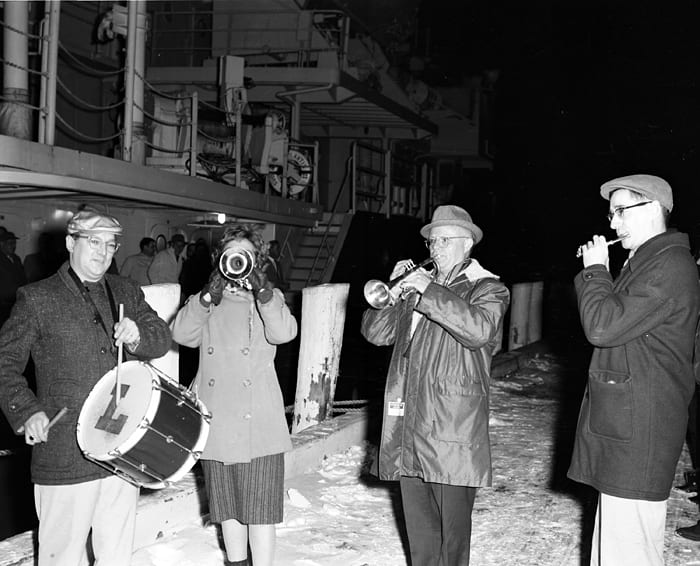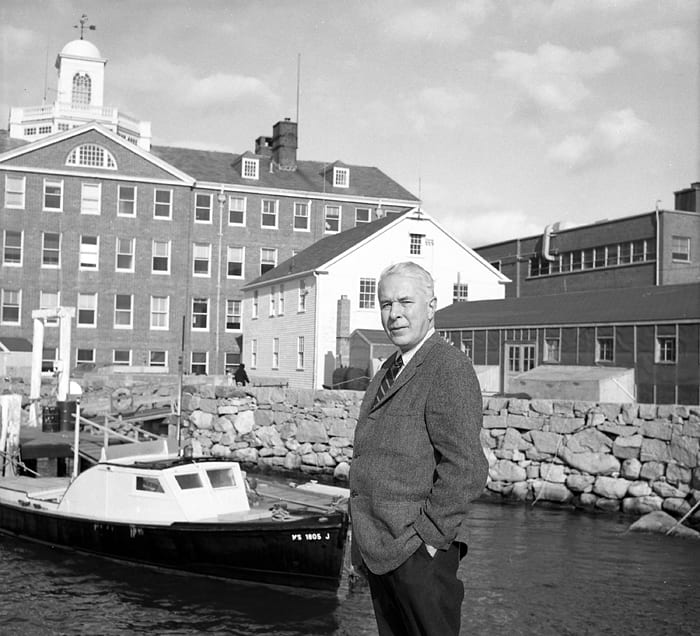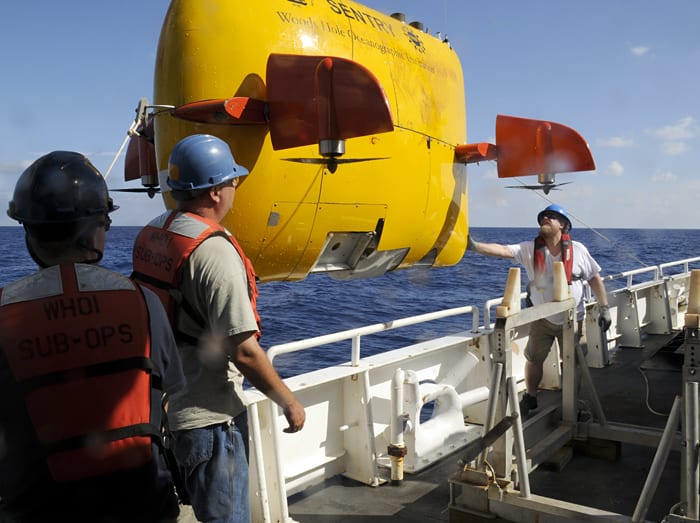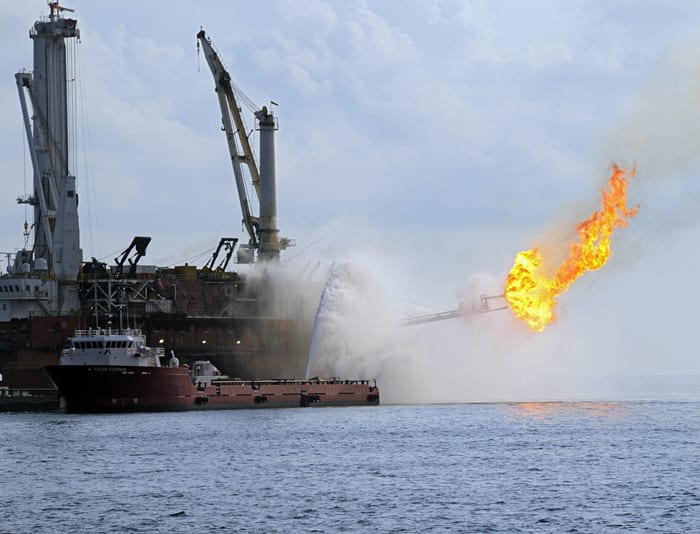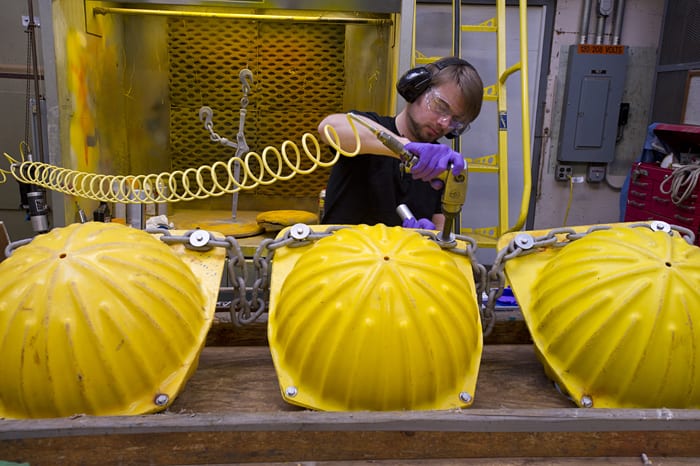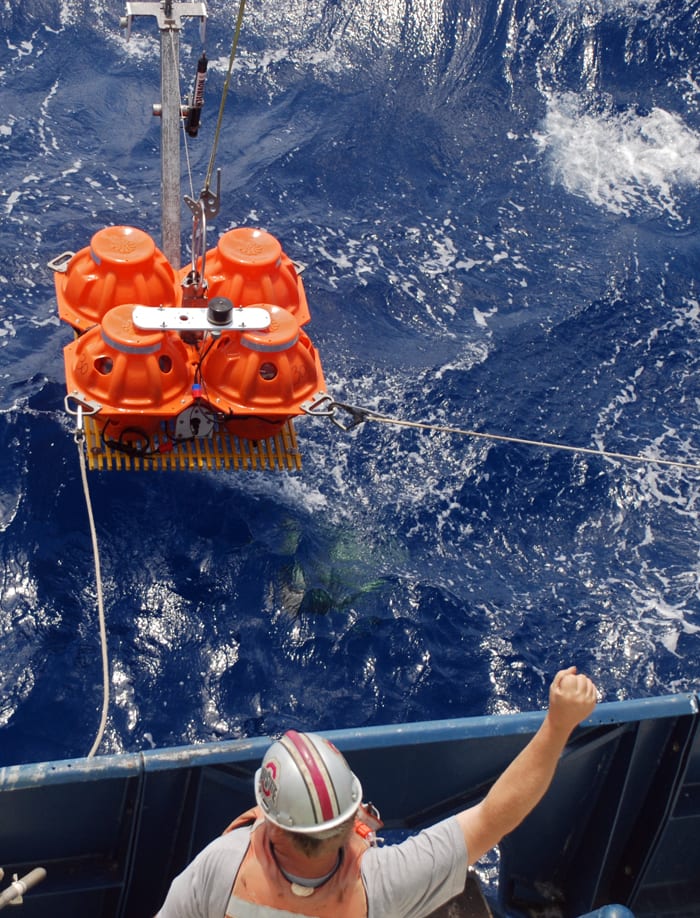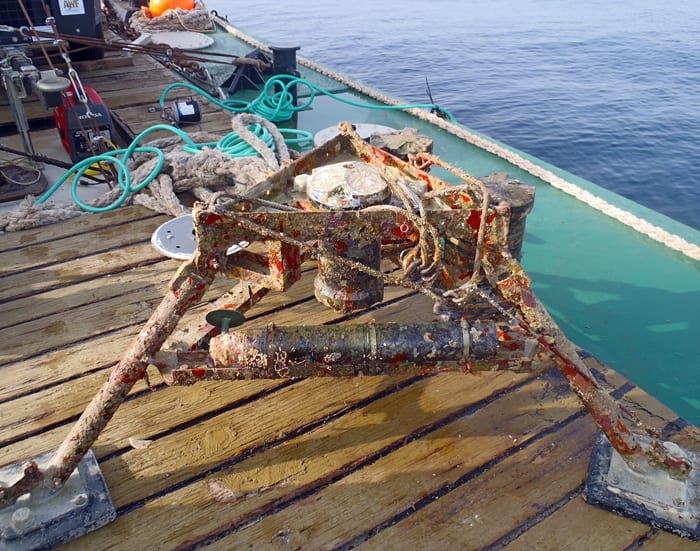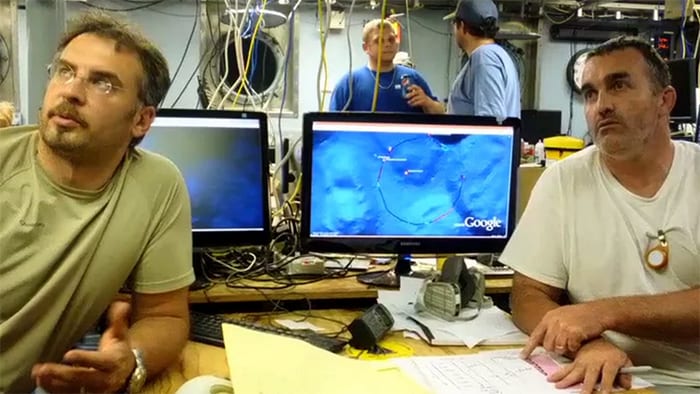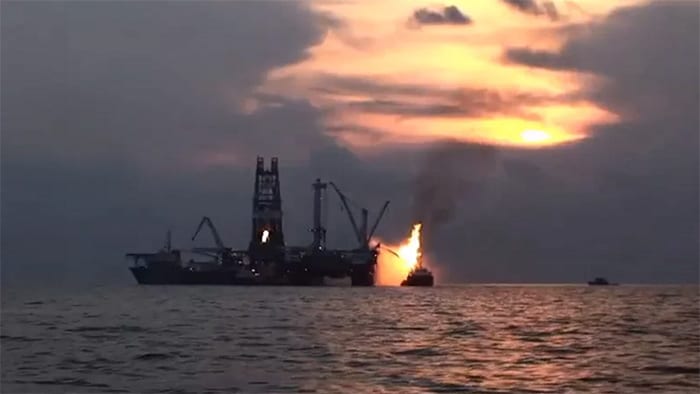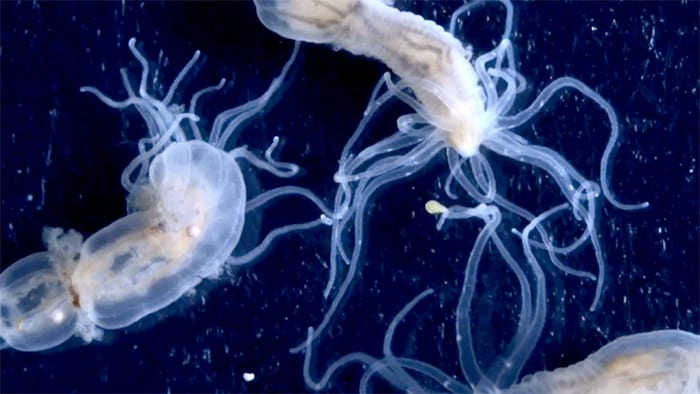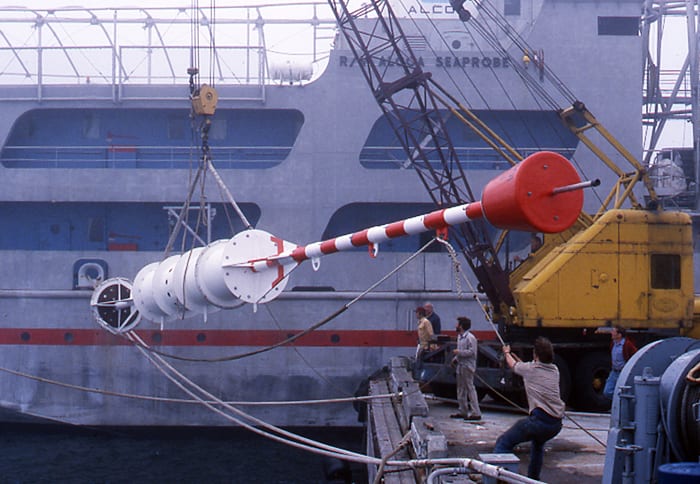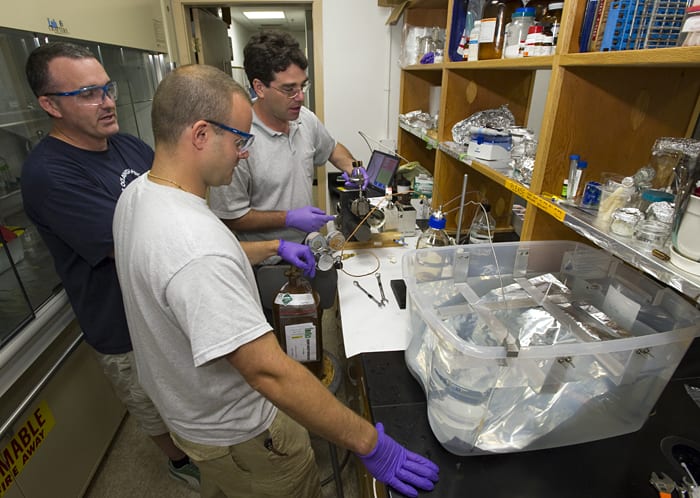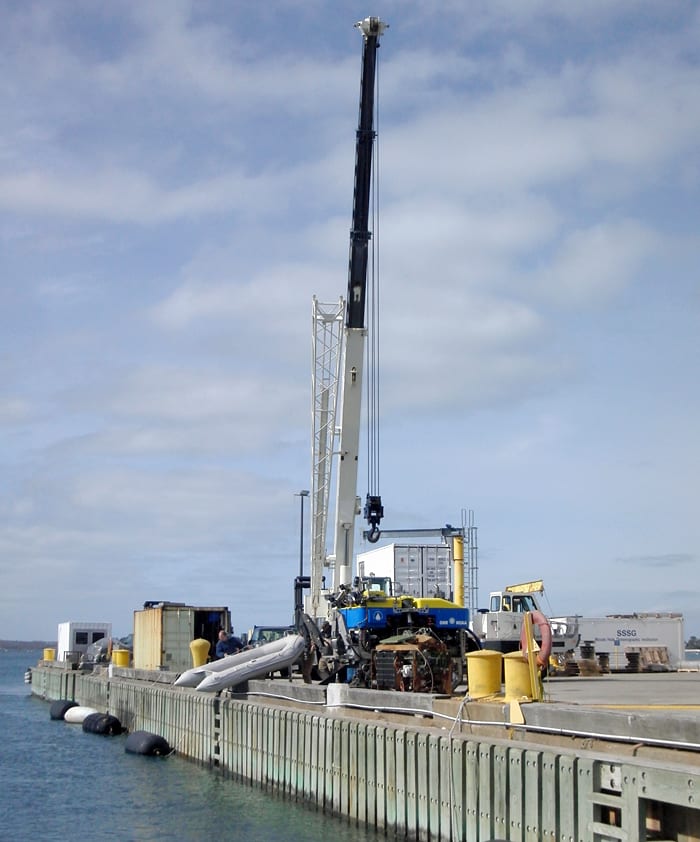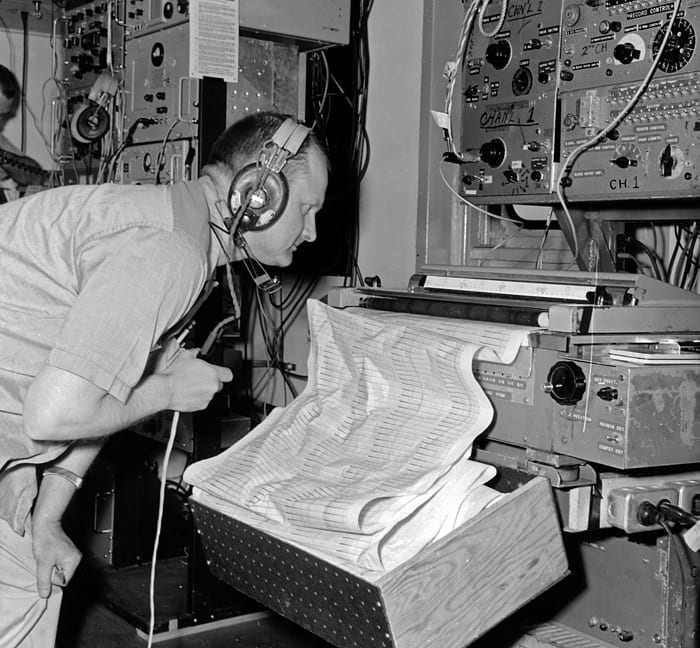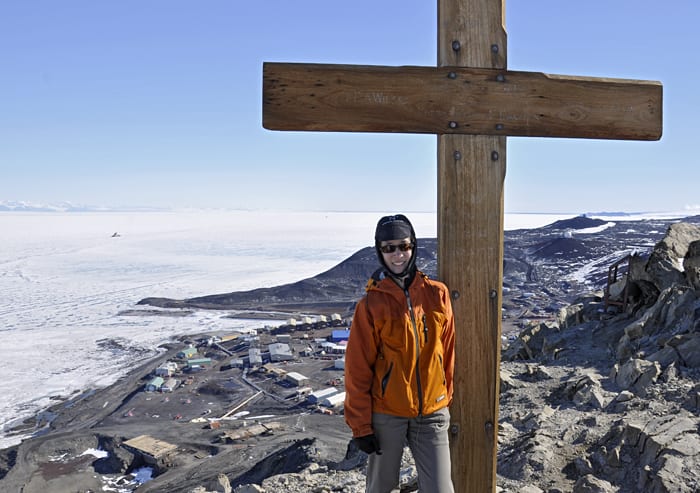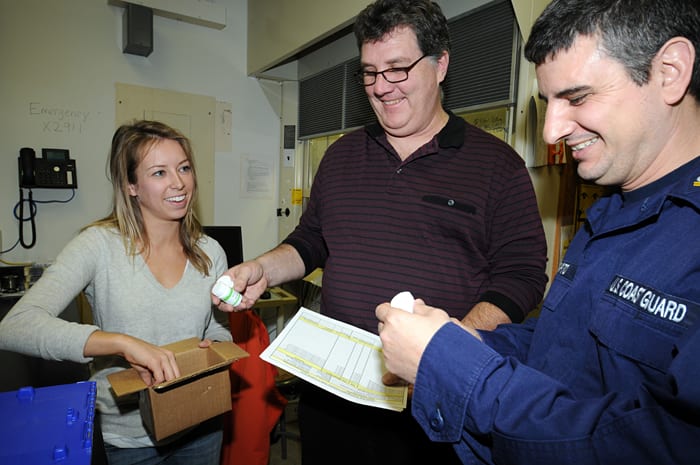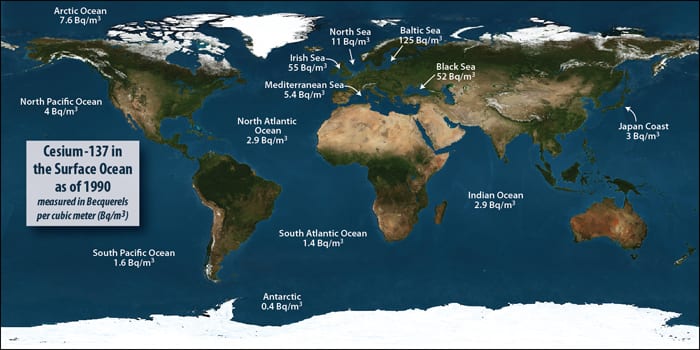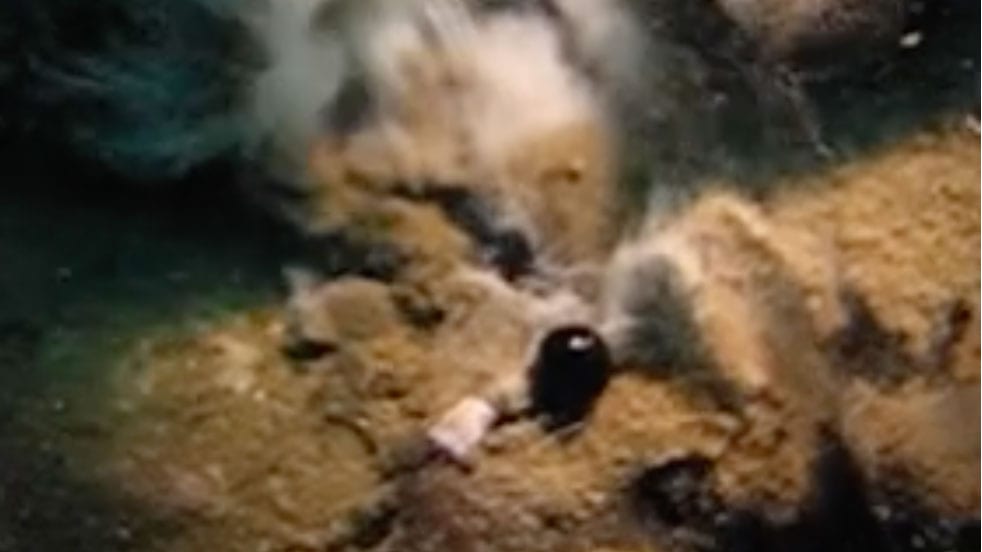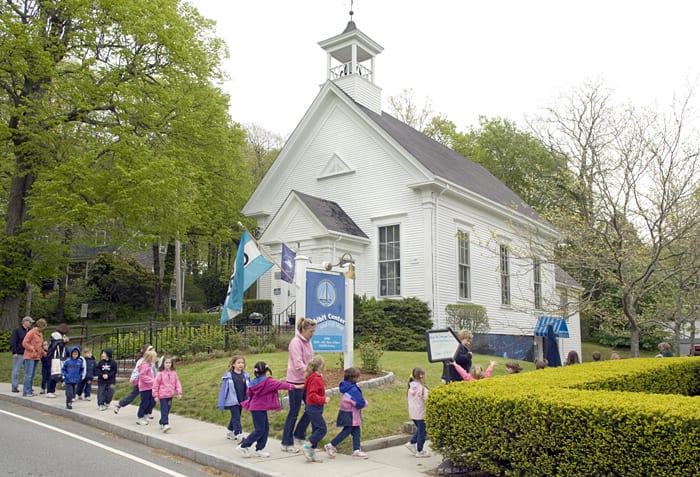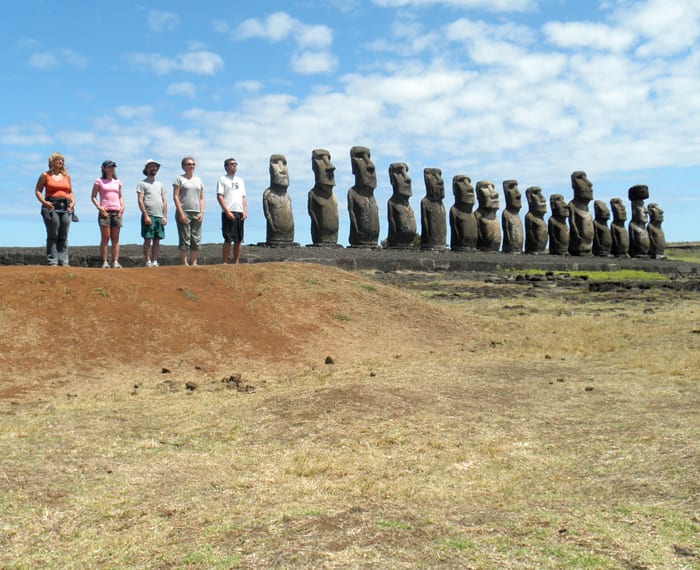Multimedia Items
And the Band Played On
It’s a long-standing tradition for the Woods Hole Marching and Chowder Society to welcome WHOI ships and their crews back from long voyages. Welcoming Atlantis II to Woods Hole for the…
Read MoreColumbus Iselin, WHOI’s second director
Columbus O’Donnell Iselin, on the WHOI dock in about 1964, with WHOI’s original building, the cupola-topped Bigelow Lab, in the background. Iselin served as WHOI’s second director, from 1940 to…
Read MoreSentry on Patrol
In June 2010, aboard R/V Endeavor, WHOI engineers Al Duester (right) and Andy Billings (center) helped recover the autonomous underwater vehicle (AUV) Sentry after a dive in the Gulf of…
Read MoreFlaring off in the Gulf
The recovery vessel Q4000 burns off gas after receiving oil from a “choke line” plumbed into the blowout preventer of the Deepwater Horizon in June 2010, some two months after…
Read MoreHardhats at Work
Engineering assistant Matthew Adams prepares “hardhat” floats for use in an upcoming project in the Lofoten Basin between Iceland and Norway in the far northern Atlantic. WHOI physical oceanographer Fiamma…
Read MoreOBS Recovery
Crew aboard the R/V Atlantis recover an ocean bottom seismometer (OBS) during a January 2009 expedition. The sensitive instruments are deployed on the seafloor to record ground movements from undersea…
Read MoreA Coating of Many Colors
After a year in the Red Sea, this tripod is sporting a colorful growth of coral. It was recovered by John Kemp and Jim Ryder during a cruise led by…
Read MoreSampling the Source
After measuring flow from the broken wellhead, WHOI scientists focused on collecting pure samples to identify the amount of oil and its chemical fingerprint.
Read MoreOil Spill Pioneers
In 1969, an oil spill near Woods Hole spurred WHOI scientists to pioneer oil spill research—laying groundwork for responses like Deepwater Horizon.
Read MoreSearching for the Plume
After the spill began, scientists sought the missing oil beneath the surface, concerned it threatened Gulf fisheries and deep-sea ecosystems.
Read MoreHow Much Oil?
After the Deepwater Horizon spill, WHOI scientists used hydrothermal vent research techniques to help determine how much oil entered the Gulf of Mexico.
Read MoreTracking the Currents
After the Deepwater Horizon spill, WHOI scientists used Spray gliders to track the Gulf’s Loop Current
Read MoreAssessing the Impacts
After the Deepwater Horizon spill, scientists began assessing impacts beyond oiled wildlife—down to deep-sea life, marsh mud, and the full water column.
Read MoreSparring with JASIN
Between July and September of 1978 more than 50 teams of scientists from nine countries, including physical oceanographers from WHOI, participated in JASIN, the Joint Air-Sea Interaction Experiment. The experiment…
Read MoreTapping a Small, High-Pressure Keg
WHOI researchers (l to r) Chris Reddy, Sean Sylva, and Jeff Seewald prepare to tap into the pressurized chamber holding material collected from the damaged wellhead at the Deepwater Horizon…
Read MoreReady to Launch
Team members ready the remotely operated vehicle (ROV) Jason for testing off the WHOI dock in March 2011 in preparation for an upcoming expedition. Engineers in the National Deep Submergence…
Read MoreOne Man’s Contribution
Research specialist and hydro-acoustics engineer Sydney “Bud” Knott (above) is considered the father of modern echo-sounding. In the 1950s, he was the principal developer, with Warren Witzell, of the precision…
Read MoreTop of the Hill, Bottom of the World
Biogeochemist Phoebe Lam took advantage of clear conditions to climb Observation Hill, adjacent to McMurdo Station in Antarctica. Lam and her team are working with three other institutions to determine the…
Read MoreKeeping Track
In February 2011, research assistant Catherine Carmichael and research specialist Robert Nelson transferred possession of critical oil samples and chain-of-custody records to U.S. Coast Guard Petty Officer John Agapito (right)…
Read MoreChernobyl’s Ocean Legacy
Twenty-five years ago today, the Chernobyl nuclear power plant in Ukraine exploded and burned, creating what was at the time the largest accidental release of radiation to the environment. Ken…
Read MoreSeafloor Oil Seep
Dave Valentine and his UCSB scuba team collected oil from a seafloor seep, discovering filamentous microbes likely feeding on the leaking oil.
Read MoreExplore Ocean Science
Visit the Woods Hole Oceanographic Institution’s Ocean Science Exhibit Center, now open for the season, where you can discover the world of ocean science. Featured exhibits include a full scale…
Read MoreHappy Easter (Island)
Conditions change markedly moving west across the South Pacific from Chile, where coastal waters are filled with essential nutrients–including nitrogen, phosphorus, and iron–to Rapa Nui (Easter Island), where nutrients are…
Read MoreStudying the Stream
WHOI physical oceanographer Alan Faller (right) and a visiting colleague conduct a circulation experiment circa 1957. Building on early studies of the Gulf Stream, Faller’s lab did illustrative experiments on…
Read More
